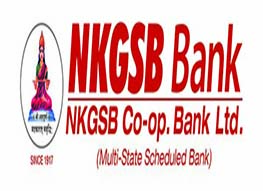e-CRM: The New Concept in Marketing
- The new economy has begun. Today, the Internet is a given, the web is a significant economic and social force, and e-mail is the predominant form of written business communication.
- The new economy has brought more than just technological change to the business world. The Internet revolution was really about people - customers - and the fundamental shift of market power from the seller to buyer.
- In the new economy, customer's expectations are very different than before. A company's understanding of this difference and its ability to capitalise on it will be the key to its success.
- Customer Relationship Management (CRM) embeds the view of the customer in all aspects of how an enterprise conducts business.
- e-CRM uses the electronic media to integrate and simplify customer-related business processes, drastically reducing costs of customer-facing operations while achieving CRM's primary goal is to enhance the customer experience. It ensures that a company's various divisions share a single view of the customer, and that the customers get a single view of the company.
- e-CRM derives from CRM techniques, which leveraged call centre and direct marketing technology to market mass-produced goods and services to small market sub-segments. e- expands on this technology by using next generation segmentation and analysis technologies, comprehensive customer interaction data, multi-channel communications and one-to-one interactions to market customised products and services to ever-more precise segments.
- In simplest terms e-CRM provides companies with a means to conduct interactive, personalised and relevant communications with customers across both electronic and traditional channels.
The challenges
In today's competitive arena the market dynamics which companies must address in order to survive and pros are numerous, some of these are:
- Newly empowered customers who choose how to communicate with the companies.
- Consumers who expect a high degree of personalization.
- Emerging real time, interactive channels including email, web, ATMs and call centre that must be synchronized with a customers non-electronic activity. The speed of business change, requiring flexibility and rapid adoption to technologies.
Supported By:
- Leading edge and applicable tools and technology.
- insightful customer information (data mining capabilities).
- On-going measurement and analysis.
- Increased customer satisfaction
- Increased retention and loyalty
- Maximised economic value of customer base
- Higher lead conversion
- Superior financial performance
- Competitive advantage
e-CRM Vs. CRM
- CRM is essentially a business strategy for acquiring and maintaining the right customers over the long-term. Within this framework, a number of channels exist for interacting with Customers. One of these channels is "electronic" - and has been labeled "e-commerce" or "e-business". This electronic channel does not replace the sales force, the call centre, or even the fax. It is simply another extension, albeit a powerful new one, to the customer
- The thrust of e-CRM is not what an organisation is "doing on the Web" but how fully an organisation ties its on-line channel back to its traditional channels, or customer touch-points.
CRM in Business << Previous
Next >> 6e of e-CRM
Our aim is to provide information to the knowledge seekers





.jpg)

